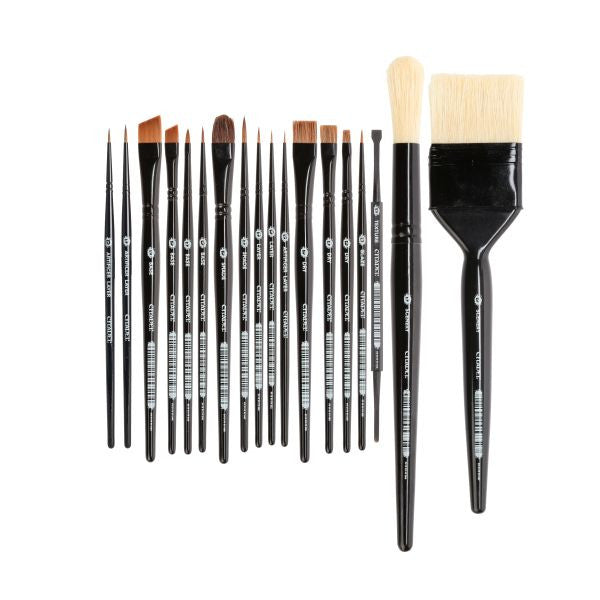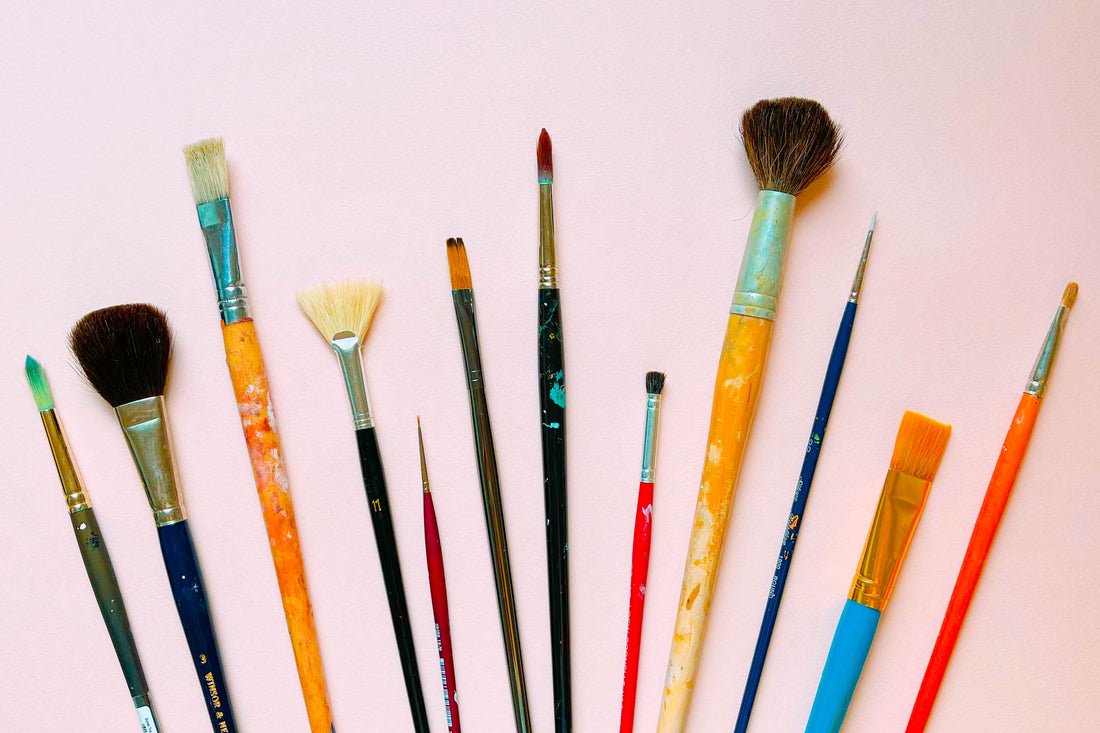
Getting Dry Acrylic Paint Out of Brushes: A Comprehensive Guide
As an avid painter, I’ve faced the inevitable frustration of dried acrylic paint clinging stubbornly to my brushes. It can be a disheartening setback that threatens to ruin precious tools and hinder artistic progress. However, through trial and error, I’ve discovered a range of effective methods to reclaim my brushes and restore their pristine condition. Join me as we delve into the world of acrylic paint removal, exploring both traditional and innovative techniques.
Before embarking on our journey, let’s take a moment to address the importance of brush maintenance. Acrylic paint, known for its fast-drying properties, can quickly accumulate on brushes if proper care is not taken. Allowing paint to dry on brushes not only compromises their performance but also shortens their lifespan. Hence, it’s crucial to clean your brushes meticulously after each use. With this in mind, let’s dive into the techniques that will help you conquer the challenge of dried acrylic paint.
Subheading: Techniques for Removing Dry Acrylic Paint
1. Water and Dish Soap: The Classic Solution
This time-honored method is a reliable choice for removing dried acrylic paint. Simply soak your brushes in warm water and a mild dish soap solution. Allow them to sit for several minutes, giving the water and soap time to penetrate the dried paint. Use your fingers to gently massage the bristles, loosening the paint’s grip. Rinse the brushes thoroughly with clean water and blot them dry with a soft towel.
2. Rubbing Alcohol: A Solvent-Based Approach
Rubbing alcohol, with its solvent properties, is an effective alternative to water-based solutions. Dip a cotton ball or cloth in rubbing alcohol and gently rub the bristles of your brushes. The alcohol will dissolve the dried paint, enabling you to wipe it away. Be sure to rinse the brushes with water afterward and dry them thoroughly to prevent any residual alcohol from damaging the bristles.
3. Vinegar and Baking Soda: A Natural Remedy
This eco-friendly solution harnesses the power of vinegar and baking soda to remove dried acrylic paint. Fill a container with equal parts vinegar and warm water and soak your brushes for several hours. The vinegar will soften the dried paint, making it easier to remove with a gentle brush. Rinse the brushes thoroughly with water and apply a baking soda paste (made with baking soda and a little water) to the bristles. Allow it to sit for a few minutes and then brush away any remaining paint. Rinse and dry your brushes.
4. Brush Cleaner: A Specialized Solution
Commercial brush cleaners are specifically designed to remove dried acrylic paint. These cleaners typically contain a blend of solvents and detergents that effectively dissolve and lift away even the most stubborn paint residues. Simply follow the manufacturer’s instructions, soaking your brushes in the brush cleaner for the recommended time. Rinse the brushes thoroughly with water and dry them.
5. Mechanical Removal: A Last Resort
If the aforementioned methods fail to remove the dried acrylic paint, you may need to resort to mechanical removal. Use a sharp blade to gently scrape away the dried paint, taking care not to damage the bristles. Alternatively, you can try using a wire brush to dislodge the paint. Be cautious with this method, as it can damage the bristles if not done carefully.
Tips for Effective Brush Maintenance
Beyond addressing dried paint, regular brush maintenance is essential for keeping your brushes in optimal condition. Here are a few tips:
- Clean your brushes immediately after use. Don’t allow paint to dry on the bristles, as it will make it harder to remove later.
- Condition your brushes regularly. Apply a drop of brush conditioner to the bristles and gently massage it in. This will help prevent the bristles from becoming dry and brittle.
- Store your brushes properly. Keep your brushes upright in a well-ventilated area to prevent moisture from accumulating and damaging the bristles.
Expert Advice: Maintaining Your Brushes
Master Brushmaker’s Perspective: According to master brushmaker John Pike, the key to brush longevity lies in proper cleaning and drying. “Always clean your brushes thoroughly after each use, removing all paint residue. Dry them completely before storing to prevent moisture damage,” he advises.
Professional Artist’s Insight: Renowned artist Sarah Jane Szikora emphasizes the importance of conditioning brushes. “Regular conditioning keeps the bristles soft and supple, enhancing the brush’s performance and longevity,” she says. “A drop of brush conditioner applied monthly or more frequently for heavily used brushes will make a significant difference.”
Frequently Asked Questions (FAQs)
- Q: How often should I clean my brushes?
A: You should clean your brushes immediately after each use to prevent paint from drying on the bristles. - Q: Can I use regular soap to clean acrylic brushes?
A: Yes, you can use a mild dish soap to clean acrylic brushes. However, avoid using harsh detergents, as they can damage the bristles. - Q: How do I store my brushes properly?
A: Keep your brushes upright in a well-ventilated area to prevent moisture accumulation. Avoid storing brushes in airtight containers, as this can lead to mold growth. - Q: How can I tell if my brushes need to be replaced?
A: Brushes need to be replaced when the bristles become frayed, split, or lose their shape. Damaged brushes will not perform well and can ruin your artwork.
Conclusion
With the techniques and insights presented in this guide, you now have a comprehensive arsenal to tackle the challenge of dried acrylic paint on your brushes. Remember, regular brush maintenance is paramount to preserve their quality and performance. By adhering to these methods and incorporating the expert advice, you can keep your brushes in pristine condition, ensuring they remain your trusted companions on your artistic journey. I encourage you to experiment with the different techniques to find what works best for your brushes and painting style. Happy painting!
Would you like to know more about taking care of your brushes or want to delve into specific brush cleaning methods? Let us know in the comments below, and we’ll be happy to continue the conversation!

Image: rossartandcraft.com

Image: angelastaehling.com
How To Use Acrylic Paint – A Beginners Guide – ZenARTSupplies | Inspiring the Artist in Everyone Jan 20, 2023Use a comb or wire brush: If you’re having trouble getting all of the paint out of your brushes, a comb or wire brush can help loosen up stubborn chunks of hardened paint without causing damage. 4. Be patient: Removing dried-out acrylic paint from brushes can be a time-consuming process, so be patient and persistent with your cleaning efforts.